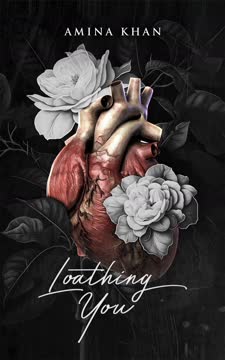Plot Summary
Pep Rally and Birthday Bonds
Hannah and her close-knit group of friends—Baker, Wally, Clay, Joanie, and Luke—navigate the rituals of senior year at their Catholic high school in Baton Rouge. The story opens with a vibrant pep rally, where Baker, the charismatic student council president, leads the school in celebration. It's also Baker's birthday, and the group's playful banter and inside jokes reveal deep bonds. That night, they gather for a small, intimate birthday party, sharing King Cake and laughter. Beneath the surface, Hannah's feelings for Baker simmer, unspoken but ever-present, as she observes Baker's every gesture with a mix of affection and yearning. The warmth of their friendship is palpable, but so is the tension of something more, setting the stage for the emotional journey ahead.
Winter's Comfort, Spring's Restlessness
As winter gives way to spring, the group settles into familiar routines—sneaking off-campus for beignets, sharing meals, and spending weekends together. Hannah and Baker's friendship deepens through shared rituals, from dog park mornings to late-night parties. Yet, the comfort of these routines is tinged with restlessness. College decisions loom, and the group's dynamic is subtly shifting. Hannah's feelings for Baker intensify, manifesting in small moments—shared glances, gentle touches, and the ache of wanting more. The world around them is changing, and so are they, but for now, they cling to the illusion of permanence, savoring the fleeting innocence of their final semester.
Mardi Gras Revelations
Mardi Gras brings a sense of freedom and wildness. Clay throws a party that becomes the backdrop for a pivotal moment. Amidst the revelry, alcohol lowers inhibitions, and Hannah and Baker find themselves alone, their friendship teetering on the edge of something more. In a bathroom, away from prying eyes, they share a drunken, passionate kiss—an act that is both exhilarating and terrifying. The kiss awakens something undeniable in both girls, but it also plunges them into confusion and fear. The party continues, but for Hannah and Baker, nothing will ever be the same. The boundaries between friendship and love have been irrevocably crossed.
After the Kiss: Shame
The morning after, shame and fear take hold. Baker insists on pretending nothing happened, desperate to restore normalcy. Hannah, reeling from the intensity of her feelings, tries to comply, but the memory of the kiss haunts her. Both girls grapple with guilt—toward each other, their friends, and their faith. The Catholic rituals of Ash Wednesday and Lent amplify their sense of sin and unworthiness. At school, the fallout from the Mardi Gras party adds to the tension, as rumors swirl and authority figures crack down. Hannah's internal conflict deepens, and the unspoken rule emerges: they can never talk about what happened.
Boys, Girls, and Denial
As spring arrives, the group's romantic entanglements become more complicated. Clay asks Baker to prom, and Wally asks Hannah. Baker and Clay share a kiss, witnessed by Hannah, who is devastated but unable to express why. Hannah tries to convince herself she can be happy with Wally, but their kisses lack the spark she felt with Baker. The pressure to conform—to be the "right" kind of girl, to date boys, to fit into the expectations of family and faith—mounts. Hannah buries her feelings, telling herself she can ignore them, but the truth refuses to stay hidden.
Spring Break: First Love
The group heads to Destin for spring break, seeking escape and adventure. The sun, sand, and late-night talks create an atmosphere ripe for confession and intimacy. Hannah and Baker, sharing a room, are drawn together by an irresistible force. One night, after a party, they finally give in to their feelings, making love for the first time. The experience is both sacred and fraught, filled with joy, fear, and the weight of their secret. But the morning after, shame returns with a vengeance. Baker pulls away, and the fragile trust between them shatters. The return home is marked by silence and avoidance, and Hannah is left heartbroken.
The Only Two Humans
Back at school, the group fractures. Baker distances herself from Hannah, seeking solace in Clay, while Hannah spirals into loneliness and self-doubt. The pain of rejection is compounded by the loss of her friends and the sense that she is fundamentally wrong. A late-night confrontation on the beach—just the two of them, raw and exposed—brings their fears and desires to the surface. They fight, cry, and ultimately admit their love for each other, but the shame and fear remain. Their connection is undeniable, but so is the cost of pursuing it in a world that refuses to accept them.
Broken Trust, Broken Hearts
The group's fractures deepen as secrets come to light. Baker and Clay's relationship becomes public, and Hannah is forced to watch the girl she loves with someone else. The pressure of keeping secrets and living a lie becomes unbearable. A drunken party leads to a physical fight, and the group's unity is destroyed. Hannah's pain is compounded by public humiliation—rumors, bullying, and the loss of her support system. The shame she feels is mirrored by Baker, who is equally lost and hurting. Both girls are trapped by their fear, unable to find a way forward.
The Prom Queen's Crown
Prom night is a bittersweet milestone. Baker is crowned Prom Queen, dancing with Clay in front of the entire school, while Hannah watches from the sidelines, her heart breaking. The public celebration contrasts sharply with her private despair. Wally, ever loyal, tries to comfort her, but Hannah cannot escape the pain of seeing Baker with someone else. The night ends in tears and self-doubt, as Hannah is forced to confront the reality that her love may never be accepted or reciprocated. The crown is heavy, and the cost of conformity is steep.
Shards of Glass
The aftermath of prom brings everything to a head. Hannah's secret is exposed through a leaked email, and the school community turns against her. Ms. Carpenter, her beloved teacher and confidante, is fired for offering support. Hannah is ostracized, bullied, and abandoned by her friends. The pain is overwhelming, and she is consumed by shame and self-loathing. The breaking point comes at a party, where violence erupts and Baker is seriously injured. The physical and emotional wounds are deep, but in the chaos, the truth finally comes out—about the email, about their love, and about the cost of hiding.
Possibility and Confession
In the wake of the crisis, Hannah and Baker are forced to confront their feelings and the consequences of their actions. Apologies are made, confessions are shared, and the process of healing begins. Hannah's family, initially shocked and hurt, ultimately offers love and support. Ms. Carpenter, though gone from the school, provides wisdom and reassurance, helping Hannah see that her love is not a sin but a gift. The possibility of a future together emerges, fragile but real. The journey toward self-acceptance and forgiveness is painful, but hope flickers on the horizon.
Good Friday: The Reckoning
The school community grapples with the fallout from the scandal. Father Simon's homily on same-sex love is a public condemnation, but Ms. Carpenter's silent protest and eventual dismissal become acts of quiet resistance. Hannah is called to the principal's office, where she takes the blame to protect Baker. The cost is high—public shaming, the loss of her teacher, and the strain on her family—but it is also an act of love and courage. The reckoning is both personal and communal, as everyone must confront their own beliefs about love, faith, and forgiveness.
The Arms of Hanging Men
Hannah's world contracts as she loses her friends, her teacher, and her sense of safety. Her family struggles to understand and support her, and she is forced to navigate the pain of rejection and isolation. The image of the "arms of hanging men"—the live oaks that line her street—becomes a symbol of both suffering and endurance. In the quiet moments, Hannah begins to find strength in herself and in the love that remains. The journey is lonely, but she is not alone.
The Fall
At the final graduation party, tensions explode. Hannah is targeted by her classmates, and violence erupts. In a moment of courage and love, Baker intervenes, taking the brunt of the attack and falling through a fence, sustaining serious injuries. The chaos of the night is a crucible, burning away the lies and forcing everyone to confront the truth. In the hospital, surrounded by friends and family, the group begins to heal. Baker's sacrifice is an act of love, and Hannah's devotion is unwavering. The fall is both literal and metaphorical—a necessary descent before the possibility of resurrection.
The Tree
As Baker recovers, Hannah and her friends gather in a hospital chapel, seeking solace and connection. The image of the tree—once a symbol of sin and shame—becomes a symbol of salvation and hope. Apologies are made, friendships are mended, and the process of forgiveness begins. Hannah and Baker, finally honest with themselves and each other, confess their love and commit to moving forward together. The journey is not over, but the promise of new life is real.
The Third Day
Graduation arrives, marking the end of one chapter and the beginning of another. Hannah, now openly herself, finds acceptance from her family and a renewed sense of purpose. The group, though changed, comes together for one last bike ride, reclaiming the joy and innocence of their youth. Hannah and Baker, reunited, embrace the possibility of a future together. The pain of the past is not forgotten, but it is transformed by love and forgiveness. The third day is a day of resurrection—a new beginning.
In the Garden
As summer fades, Hannah and Baker savor the sweetness of their love. They dance in bedrooms, share secret dates, and dream of the future. The garden—once a symbol of innocence lost—becomes a place of renewal and hope. The story ends with the two of them, hand in hand, walking into the unknown, ready to face whatever comes next. Their love, hard-won and hard-fought, is a testament to the power of truth, forgiveness, and the courage to be oneself.
Characters
Hannah Eaden
Hannah is the novel's protagonist, a thoughtful, introspective senior at a Catholic high school. She is fiercely loyal to her friends and family, but struggles with her sexuality and the expectations of her faith and community. Her love for Baker is the story's emotional core, driving her journey from denial and shame to self-acceptance and courage. Hannah's psychological depth is revealed through her internal monologue—her longing, guilt, and hope. She is both vulnerable and brave, willing to sacrifice her own happiness for others, but ultimately learning to claim her own truth. Her development is marked by pain, growth, and the gradual realization that love—real, honest love—is worth fighting for.
Baker Hadley
Baker is Hannah's best friend and the object of her affection. Outwardly confident and accomplished—student council president, athlete, beloved by peers—Baker is inwardly plagued by self-doubt and the fear of disappointing her family and faith. Her relationship with Hannah is both a source of joy and anguish, as she struggles to reconcile her feelings with the expectations placed upon her. Baker's journey is one of self-discovery, moving from denial and shame to acceptance and love. Her vulnerability is most apparent in moments of crisis, but her courage shines through in her willingness to risk everything for Hannah. The evolution of her character is a testament to the power of love to heal and transform.
Wally Sumner
Wally is the group's quiet anchor, known for his kindness, intelligence, and loyalty. He harbors feelings for Hannah, and their brief romantic involvement is marked by tenderness and disappointment. Wally's psychoanalysis reveals a deep need for connection and understanding, as well as a capacity for forgiveness. He is hurt by Hannah's inability to love him in the way he desires, but ultimately supports her journey toward self-acceptance. Wally's development is subtle but profound—he learns to let go, to forgive, and to remain a true friend even in the face of heartbreak.
Clay Landry
Clay is the group's de facto leader, a popular football player with a big personality and a deep need for validation. His relationship with Baker is complicated by his feelings for her and his rivalry with Hannah. Clay's psychoanalysis reveals a fear of vulnerability and a tendency to mask pain with bravado. The group's fractures hit him hard, and his anger and jealousy lead to conflict and regret. Clay's development is marked by moments of humility and growth, as he learns to accept his friends' differences and to seek forgiveness for his own failings.
Joanie Eaden
Joanie is Hannah's younger sister, known for her sharp wit and fierce loyalty. She often feels like an outsider in the group, but her love for Hannah and her friends is unwavering. Joanie's psychoanalysis reveals insecurities about her place in the world and a longing for acceptance. Her relationship with Luke is a source of both joy and pain, and her support for Hannah during the story's darkest moments is a testament to her strength. Joanie's development is characterized by growth in empathy, maturity, and the ability to forgive.
Luke Broussard
Luke is the group's joker, always ready with a quip or a prank. Beneath his humor lies a sensitive soul, deeply in love with Joanie and wounded by the group's fractures. Luke's psychoanalysis reveals a fear of abandonment and a need to be seen and valued. His journey is one of learning to express vulnerability and to forgive those who hurt him. Luke's loyalty and humor are essential to the group's dynamic, and his eventual reconciliation with Joanie and the others is a moment of healing.
Michele Duquesne
Michele is a former friend turned antagonist, driven by jealousy, insecurity, and a rigid adherence to rules. Her actions—exposing secrets, spreading rumors, and seeking retribution—are motivated by a need for control and validation. Michele's psychoanalysis reveals deep wounds and a fear of being left behind. While she is the story's primary antagonist, her actions force the other characters to confront their own truths and to fight for what matters most.
Ms. Carpenter
Ms. Carpenter is the beloved English teacher who serves as a confidante and guide for Hannah and her friends. She offers wisdom, compassion, and a safe space for self-discovery. Her dismissal from the school is a profound loss, but her influence endures. Ms. Carpenter's psychoanalysis reveals a deep empathy for her students and a willingness to sacrifice her own security for their well-being. She embodies the novel's themes of love, acceptance, and the courage to speak truth.
Father Simon
Father Simon is the school's priest, representing the Catholic Church's teachings on sexuality and morality. His sermons and actions are well-intentioned but ultimately harmful, reinforcing shame and exclusion. Father Simon's psychoanalysis reveals a rigid worldview and a fear of change. He is not a villain, but a product of his environment, and his inability to offer true compassion is a source of pain for the characters.
Baker's Family (Mr. and Mrs. Hadley, Nate)
Baker's family, especially her mother and brother Nate, play crucial roles in her journey. Mrs. Hadley embodies the pressure to conform, while Nate offers understanding and support. Their reactions to Baker's coming out are complex, reflecting the challenges of reconciling love with deeply held beliefs. Their development mirrors Baker's own, moving from fear and disappointment to acceptance and love.
Plot Devices
Duality of Faith and Desire
The novel's central plot device is the conflict between the characters' Catholic upbringing and their emerging identities. This duality is explored through rituals (Mass, confession, Lent), sermons, and the internalization of shame. The narrative structure mirrors the liturgical calendar, with key events (Mardi Gras, Ash Wednesday, Good Friday, Easter) serving as milestones in the characters' journeys. Foreshadowing is used to hint at the consequences of secrecy and denial, while symbolism (the tree, the garden, the arms of hanging men) reinforces themes of sin, shame, and redemption.
The Group as Microcosm
The tight-knit group of friends serves as a microcosm of the larger world, with each character representing different responses to change, love, and loss. The group's rituals—shared meals, parties, traditions—create a sense of belonging, but also highlight the pain of exclusion. The fracturing and eventual reconciliation of the group mirror Hannah and Baker's personal journeys, emphasizing the importance of community and forgiveness.
Letters, Notes, and Confessions
Emails, notes, and confessions are key plot devices, serving as both revelations and sources of conflict. The leaked email exposes Hannah's secret, leading to public shaming and the loss of Ms. Carpenter. Confessions—both in the religious and personal sense—are moments of vulnerability and transformation, forcing characters to confront their deepest fears and desires.
Symbolism of the Garden and the Tree
The recurring imagery of the garden and the tree draws on the story of Adam and Eve, framing the characters' struggles as a modern retelling of the Fall and Redemption. The tree is both a site of sin (the fall, the shame) and salvation (Baker's sacrifice, the promise of new life). The garden, once a place of innocence lost, becomes a place of renewal and hope by the novel's end.
Cyclical Structure and Resurrection Motif
The novel's structure is cyclical, moving from innocence to fall to redemption. The "third day" motif—mirroring the Resurrection—signals the possibility of new beginnings. The story's emotional arc is one of descent into shame and pain, followed by the slow, hard-won ascent into acceptance and love. The final chapters, set in the garden, affirm the power of resurrection—not just in faith, but in the courage to begin again.
Analysis
Her Name in the Sky is a luminous coming-of-age novel that explores the collision of faith, identity, and first love in the crucible of a conservative Catholic community. At its heart, the book is a meditation on shame and the redemptive power of truth. Through Hannah and Baker's journey, Kelly Quindlen interrogates the cost of conformity and the courage required to claim one's authentic self. The novel's structure—mirroring the liturgical calendar and the biblical arc from Fall to Resurrection—invites readers to see coming out not as a rupture, but as a kind of spiritual rebirth. The group of friends, with their rituals and fractures, embodies the universal longing for belonging and the pain of exclusion. The story's emotional honesty is its greatest strength, refusing easy answers and instead embracing the messiness of love, forgiveness, and faith. Ultimately, Her Name in the Sky is a testament to the idea that love—when chosen bravely and lived honestly—can transform even the deepest wounds into sources of hope. The novel's lesson is clear: the journey to self-acceptance is arduous, but it is also sacred, and no one should have to walk it alone.
Last updated:
Review Summary
Her Name in the Sky is a deeply emotional coming-of-age story about two teenage girls discovering their sexuality in a conservative Catholic community. Readers praise the book's honest portrayal of internalized homophobia, religious conflict, and first love. Many found the characters relatable and the writing beautiful, though some felt the angst was overwhelming. The book elicited strong emotional responses, with many readers moved to tears. While tackling difficult themes, the story ultimately offers hope and a satisfying resolution, making it a powerful and memorable read for many.
Similar Books
Download PDF
Download EPUB
.epub digital book format is ideal for reading ebooks on phones, tablets, and e-readers.




![6 Times We Almost Kissed [and One Time We Did] Summary](https://files.sobrief.com/social/cover_6-times-we-almost-kissed-and-one-time-we-did_360px_1747297013.jpg)








